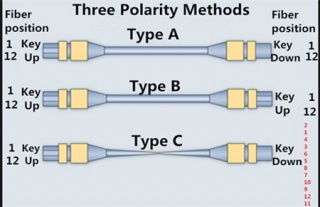MPO/MTP Cabling & Its Testing Issues
četvrtak , 05.05.2016.Data centers have never ceased their appetite for bandwidth. Virtualization, storage area networks, cloud computing, coupled with a host of other factors, all these boost that appetite. To meet such appetite means the use of a steady proliferation of fiber connections and ever-faster links. With the development of multi-fiber technology, MPO/MTP technology with multi-fiber connectors have been designed to support high-performance data center service.
The term MPO refers to multi-fiber push-on or also multi-path push-on, and MTP is a registered trademark of US Conec used to describe their connector. The US Conec MTP product is fully compliant with the MPO standards. As such, the MTP connector is a MPO connector. For simplicity, the following paragraphs will mention MTP only instead of MPO/MTP. MTP cabling solutions provide ideal conditions needed to realize high network performance, and accommodate bandwidth requirements both at present and in near future. This text aims to give basic information about MTP cable and its testing issues in details.
The Development of MTP Cabling
Prefabricated cabling systems and parallel array transmission systems, especially those 40G/100GbE networks on multi-mode fiber (MMF) generally use a MMF array connector called a MTP. This MTP connector is about the size of a fingernail, and uses a large rectangular molded plastic ferrule often with one or more rows of 12 fibers. MTP cables come in two variations (in addition to the pins/holes and keying options), cables with MTPs on either end, or breakout cables with an MTP on one end and single fiber connectors on the other end (just as image shown below).
The are two main drivers behind development of MTP cables. The first one goes to the ever-increasing need for cabling density in data centers. Cabling blocks airflow, so the denser the cable, the better the thermal management. And, as data center bandwidth steadily skyrockets to 10Gbps, 40Gbps, and 100Gbps, to even more, a dense multi-fiber cable becomes the suitable option. That is MTP cable.
The second one lies in the difficult and highly technical nature of field termination for fiber. Actually, it’s not generally considered to be suitable for field-installation. Rather, it’s usually factory terminated assemblies. Such modular factory-terminated MTP cable promises simplicity, lower cost, and true plug-and-play fiber connectivity.
MTP Cabling Testing Issues
It’s known that pre-terminated MTP fibers often experience the following processes: transportation, storage, and later bending or pulling during installation in the data center. All kinds of performance uncertainties are introduced before fiber cables are deployed. Thus, proper testing of pre-terminated cables after installation is the only way to guarantee performance in practical applications. In short, investing in factory-terminated fiber trunks to save time and decrease labor costs doesn’t really offer an advantage if the testing becomes a bottleneck.
Testing and determining the fiber polarity are challenges meeting MTP cables. The simple purpose of any polarity scheme is to provide a continuous connection from the link transmitter to the link receiver. For array connectors, TIA-568-C.0 defines three methods to accomplish this: Methods A, B, and C. Deployment mistakes are common because these methods require a combination of patch cords with different polarity types.
More Bandwidth Means More Testing
The use of MTP cables for trunking 10-Gbps connections in the data center has steadily risen over the years. That 10-Gbps cabling assembly requires a cassette at the end of the MTP cable to accommodate legacy equipment connections. Now that 40-Gbps and 100-Gbps connections are available on the market, a migration path has emerged: remove the 10-Gbps cassette from the MTP cable and replace it with a bulkhead for a 40-Gbps connection. Then it might be possible to remove that bulkhead and establish a direct MTP connection for 100Gbps at a later date. The problem is that while this migration strategy proves as an efficient way to leverage the existing cabling, in comparison to 10-Gbps connections, the 40-Gbps and 100-Gbps standards call for different optical technology (parallel optics) and tighter loss parameters.
Thus, each time you migrate, you need to verify the links to ensure the performance delivery that the organization requires. As such, it’s imperative to go on more testing while bandwidth increases.
MTP Cabling Testing Guidance
So, how to operate the proper MTP cabling testing? The answer is simple. Do as the following says. It’s highly recommended to test all 12 fibers of the MTP simultaneously and comprehensively (including loss, polarity, etc.). That sort of test capability changes the fiber landscape, enabling installers and technicians to efficiently validate and troubleshoot fiber flying through the process by tackling an entire 12-fiber cable MTP with the push of a button.
Conclusion
MTP cable ensures simple fiber connectivity and meets bandwidth demands, offering the easy way for 40/100GbE migration path from 10GbE. The growing use of MTP fiber cable shows that the single MPO connection is your right choice. Fiberstore supplies a sea of MPO/MTP cables available in trunk and harness versions. Besides MTP cables, other cabling products are also available for various applications, like 487655-B21, a HP compatible SFP+ copper cabling product for 10GbE transmission. For more information about MTP cables or other cabling products, you can visit Fiberstore.
Oznake: MPO connector, MTP connector, MTP cable, cabling products, 487655-B21
komentiraj (0) * ispiši * #


